
Career Education: Then and Now
By Steve Gunderson, President & CEO, and Michael Dakduk, Executive VP and Director of Government Relations, Career Education Colleges and Universities
The state of the sector
In November of 2016, the for-profit sector collectively breathed a deep sigh of relief. The damage done by the Obama administration’s ideological attack appeared to finally be over. But sadly, the damage cannot be undone so quickly. Years of relentless attacks from leading political figures, including the president, left a sector that is much smaller, but also significantly different. Today, this sector has returned to its roots in many ways – we again focus on postsecondary workforce education.
How bad was the damage? Since 2010, nearly 2,000 campuses in the for-profit sector have closed.1
At the sector’s peak in 2009/10, we enrolled nearly 3.7 million students. The latest available data shows enrollments are down by nearly 1.5 million students.2 Even higher education journalists began to take notice of the previous administration’s war against our sector. In an article describing the legacy of President Obama’s policies in higher education, editors at Inside Higher Ed wrote, “The colleges themselves argued that Obama and aides at the department with close ties to consumer advocates wanted to destroy the industry. They may have a point, as in recent years the (Obama) administration’s stance appears to have shifted from going after ‘bad actors’ among for-profits to a more globalized enmity.”3
These attacks were not – and are still not – limited to political entities, government agencies and the news media. Most of us in this sector recall the error-ridden report by GAO in 2010 and the subsequent report released by Senator Harkin in 2012.4 We’ve seen the countless examples of biased news reports in the The New York Times and the Huffington Post.5 But attacks leveled on our sector go beyond the traditional forms of advocacy.
Our sector, or an institution in our sector, was mentioned or featured in TV and film multiple times since 2013. These films include “Grown Ups 2” featuring Adam Sandler and “Broken City” with lead actors Mark Wahlberg and Russell Crowe. Unless you pay close attention, in several hit TV shows like “Orange Is the New Black” and “Ray Donovan,” you might miss a one-liner belittling a large, for-profit institution. Meanwhile, the CBS series the “The Good Wife” dedicated an entire episode to protecting students allegedly defrauded by a fictional for-profit college. Finally, in 2014, HBO’s “Last Week Tonight with John Oliver” produced a segment demonizing the entire for-profit sector.6
That’s the past, though, isn’t it? Well, yes and no. The sheer number of attacks has certainly declined thanks to Republican control of the White House and both chambers of Congress. Today, the agenda set by these government leaders does not include a declaration of war against our very existence. While it is much harder to piggyback off of the bully pulpit once held by President Obama, our most ardent critics are not backing down.
Recently, news icon Dan Rather helped produce the documentary “Fail State,” a self-described “dark story behind the rise of predatory for-profit colleges.”7 (You should know that about three or four years ago, Rather interviewed Steve Gunderson. You won’t be surprised to learn that none of Steve’s defenses of our sector are included in the new piece!) In what appears to be a first from a mainstream novelist, John Grisham recently authored the book “The Rooster Bar,” focusing on a sham for-profit law school.8 On a more consistent basis, Robert Shireman – a long-time critic of the sector and former Education official under Clinton and Obama – regularly publishes articles and reports as a senior fellow at the think-tank The Century Foundation.9
We mention all this not to frighten the sector or sound alarmist. They are simply facts about the environment in which we operate.
This is why our commitment is to constructive dialogue around borrower defense, gainful employment and reauthorization of the Higher Education Act (HEA). We may not have the luxury of Republican control after upcoming elections. We need to ensure that the 2.5 million students enrolled at our institutions are able to achieve the credentials they need to get real jobs, real wages, and a real chance at entering the middle class.
Rules that stand the test of time
Last year, speaking on a panel at one of the many higher education symposiums, Steve suggested that higher education had transformed. He went on to suggest the one thing holding us back was public policy. The failure of the federal government to update its policies – especially the Higher Education Act – limited the ability of all educators to fully seize this moment. The crowd broke into applause!
This year will determine whether public policy can respond to these changes in ways that stand the test of time. For many of us, the Department of Education’s current efforts at revising both the gainful employment and borrower defense regulations provide a real opportunity for civic leadership by the government and by all of us impacted by such rules. Note they are not seeking to totally dismiss such regulations. Rather, they are seeking to revise the rules in ways that provide both equity in the rule and due process in the implementation.
Listen carefully. As tempting as it is to swing the pendulum all the way back, we should think twice. We all believe that some common outcome metrics are appropriate for all programs in all schools. We believe that any student who is the victim of academic fraud should be able to seek relief from debt repayment. And we do not seek to make the same mistakes made by the other side! No one can claim victory over the past eight years, for even those who advocated for such ideological regulations must now admit their rigidity contributed to the public revolt called the 2016 election. Their regulations have been halted before they really went into effect. We can and we must do better.
Today, the negotiators engaged in seeking consensus on these issues have an opportunity to advance good public policy. The temptation, however, is for one side to resist any change and the other side to advocate for a complete reversal. Such actions reflect today’s polarization of the body politic, but they will do nothing to advance good public policy.
It is unlikely the panels negotiating these rules will agree. Therefore, this Department of Education will soon have the opportunity to advance new proposed regulations that provide equity, fairness and balance in ways that can stand the test of time regardless of which political party is in power in the future. We stand ready to help advance such credible public policy.
The Higher Education Act as America’s new workforce investment strategy
Perhaps even more important than the outcome of these negotiated rules is the reauthorization of the Higher Education Act. Rules can change more quickly than statutory language! To her credit, Chairwoman Virginia Foxx of the House Committee on Education and the Workforce has advanced a bold proposal seeking to enact a very different set of laws governing higher education. One can disagree with some of the details, but it would be very difficult to suggest the status quo – reauthorized a decade ago – serves us better than real reform!
There are some basic themes which should unite all of us – Republicans, Democrats, and every sector of higher education.
We need simplification and improvement in federal student aid programs, including moving toward a program with one grant and one loan. We also should evolve to modernize the delivery of funds to students in ways similar to the Department’s experimental pilot program, which will use some form of a prepaid card to deliver aid directly to students over the period of their program.
We should also recognize the changing role of higher education in today’s economy. With most jobs now requiring some level of postsecondary education, the Higher Education Act has become the nation’s workforce investment strategy! Reauthorization must reflect this change as a growing number of adults seek postsecondary education in shorter terms and in less than 4-year BA programs.10 We need short-term Pell grants. We need to connect apprenticeship programs to academic credits that can serve as building blocks. We need to establish competency-based programs that recognize what students know. We need accelerated academic programs that help move students into the workplace. And through all of this we must recognize the growing employer demand for occupational credentials, not just academic degrees.
A new, modern Higher Education Act could provide all of higher education with the foundation for a new era of service to all students in all sectors. We need to spend more time enhancing the quality and quantity of our educational delivery and less time dealing with the latest regulatory initiatives. Stability in public policy can provide the environment for a greater focus on the art of education and greater outcomes in the number of our students who successfully move from the classroom to the workplace.
The time is now
This sector must be engaged this year. We have an incredible opportunity to influence regulations and legislation that may be here to stay for the coming decade. Recall that reauthorization of the last HEA is now going on 10 years. We may be living with the next HEA for a while!
Fortunately, we’ve done the research and organization to prepare for this year.
Prior to Chairwoman’s Foxx’s bill being introduced, CECU gathered over 70 leaders from our sector on an HEA Reauthorization Taskforce.
The result: 40+ recommendations outlined in over 100 pages of legislative and policy text.11 The fruits of our labor paid off! Much of our work is reflected in Chairwoman Foxx’s bill and in our recently introduced bipartisan bill, H.R. 4078 – Expanding America’s Workforce Act. Now we need to act.
Next month, March 21-22, CECU will gather the sector for Hill Day. This is the sector’s opportunity to push Congress toward meaningful HEA reform:
- Modernize the Act to properly serve all students, including those seeking career education.
- Simplify all aspects of financial aid – grants, loans and the repayment process.
- Treat all institutions with the same regulations and the same outcome metrics.
- Recognize the need for short-term programs, while recognizing the changing landscape of credentials, academic apprenticeships, and work-study programs related to one’s study.
Within this broader context, we’ll obviously lift up those items directly related to our sector’s work. It will include:
- Deleting the words gainful employment from the law.
- Provide a single definition for institutions of higher education.
- Create one set of outcomes for all schools in all sectors.
- Restore Ability-to-Benefit to those who most need access to postsecondary education and career skills.
These are just a few of our many recommendations. But we need the sector’s diverse voice represented when we convene in March in Washington, D.C. The opportunity before us is rare. We must act. The time is now!
Resources:
- U.S. Department of Education, Office of Student Federal Aid Program, Postsecondary Education Participants System 2017, https://www2.ed.gov/offices/OSFAP/PEPS/closedschools.html
- U.S. Department of Education, Institute of Education Sciences, National Center for Education Statistics 2017, https://nces.ed.gov/pubs2017/2017075rev.pdf
- Lederman, D. and Fain, P., “The Higher Education President,” Inside Higher Ed, January 19, 2017, https://www.insidehighered.com/news/2017/01/19/assessing-president-obamas-far-reaching-impact-higher-education
- U.S. Senate Health, Education, Labor and Pensions Committee, “For Profit Higher Education: The Failure to Safeguard the Federal Investment and Ensure Student Success,” July 30, 2012, https://www.help.senate.gov/imo/media/for_profit_report/PartI.pdf
- A section of The New York Times is dedicated to “For-Profit Schools” online at https://www.nytimes.com/topic/subject/forprofit-schools; David Halperin regularly contributes to HuffPost. His articles may be found here: https://www.huffingtonpost.com/author/davidhalperin.
- Last Week Tonight with John Oliver, “Student Debt,” HBO, October 4, 2014, https://www.youtube.com/watch?v=P8pjd1QEA0c
- Shebanow, A. and Rather, D., “Fail State,” documentary, accessed February 1, 2018, https://failstatemovie.com/
- John Grisham, “The Rooster Bar.” http://www.jgrisham.com/books/the-rooster-bar/
- The Century Foundation, Robert Shireman, https://tcf.org/experts/robert-shireman/
- U.S. Department of Education, Institute of Education Sciences, National Center for Education Services, “Characteristics of Degree-Granting Postsecondary Institutions,” 2017, https://nces.ed.gov/programs/coe/indicator_csa.asp
- Career Education Colleges and Universities, “Connecting the Higher Education Act to Jobs,” 2017, https://www.career.org/hea.html
STEVE GUNDERSON was named President and CEO of the Career Education Colleges and Universities in January 2012. His appointment continues an entire career of leadership and engagement in the education and workforce investment challenges facing America’s citizens.
This commitment began at the age of 23, when he was first elected to the Wisconsin State Legislature. After three terms in Madison, Gunderson served 16 years in the U.S. Congress and was a recognized leader on education, employment policy, health care, human rights and agriculture issues. Following his career in public service, he was named the senior consultant and managing director of the Washington office of The Greystone Group, a strategic management and communications consulting firm. His portfolio centered around research, writing, speaking and consulting on the jobs revolution in America. He was the lead author of the book “The Jobs Revolution: Changing How America Works” and the sole author of “The New Middle Class: Creating Wages, Wealth and Opportunity in the 21st Century.”
Gunderson spent six years as President and CEO of the Council on Foundations. One of his many priorities at the Council was education and workforce investment. Under his leadership the Council created a division for Public-Private Partnerships where the National Fund for Workforce Solutions operates.
Gunderson graduated from the University of Wisconsin – Madison with a degree in Political Science, he then completed studies at Brown School of Broadcasting in Minneapolis. Steve serves on various nonprofit boards including Lutheran World Relief; The Gettysburg Theological Seminary; and The White House Fellows Selection Commission.
Contact Information: Steve Gunderson // President and CEO // Career Education Colleges and Universities // 571-970-3954 // president@career.org // https://www.career.org
MICHAEL DAKDUK currently serves as executive vice president and director of government relations for Career Education Colleges and Universities (CECU). His work includes legislative and regulatory issues impacting the sector. Prior to this role, he served as vice president of military and veterans affairs for CECU.
Michael, a Marine Corps veteran of Iraq and Afghanistan, previously led Student Veterans of America (SVA), a nonprofit coalition of military veterans enrolled at colleges and universities. Student Veterans of America played a major role in passing the Post 9/11 GI Bill in Congress and later spearheaded the effort to track student outcomes on GI Bill-beneficiaries.
Michael earned his undergraduate degree at the University of Nevada, Las Vegas, where he was also named a President Harry S. Truman Scholar. He later completed his master’s degree at Johns Hopkins University.
Contact Information: Michael Dakduk // Executive Vice President & Director of Government Relations // Career Education Colleges and Universities // 571-970-6338 // michael.dakduk@career.org // https://www.career.org
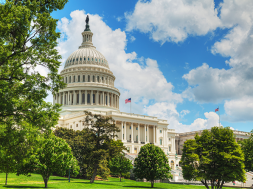

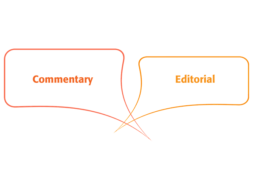



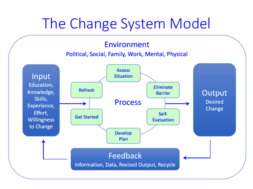

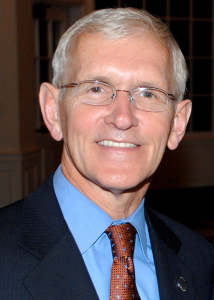
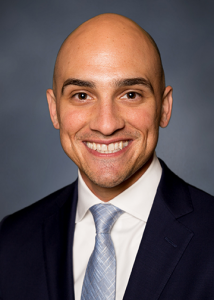
Comment(1)